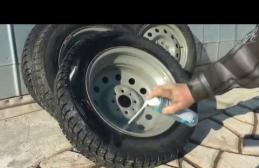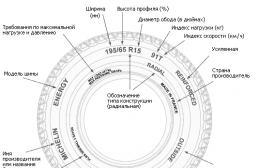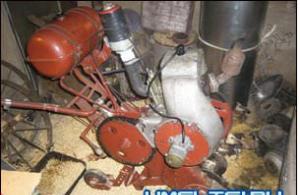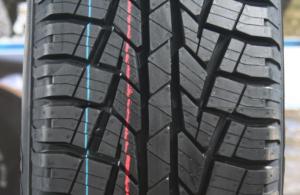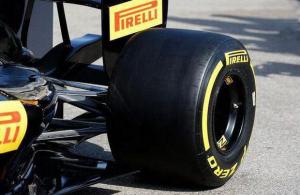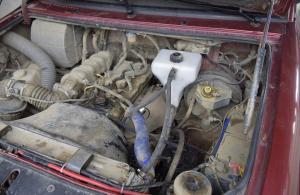already purchased the third Avensis. On the first (carine e 1.6) I drove 208,000. On the second Avensis (1999, 2 liter turbo diesel) I drove 145,000 km. On this in 4 months 22,000. So it seems that there is some experience of operation and repair (I did everything in the garage). Only Karina E possessed the design and soul. Both Avensis are boring on the outside. Everything is fine inside except for the new cladding (very easily soiled, everything sticks and the vacuum cleaner does not take it). Ergonomics-everything is excellent. Even when transplanting from a German and back. The climate is at a height but new. the problem with fogging the glasses (for smart people - I changed the cabin filter 2 times and tried to remove it altogether. Effect about ...). Have to stick harder with the rotator. The problem with the optics (and it is expressed in the first two) was solved by xenon. as they wrote here, they are very reliable (except for a new one, since a mileage of 20 tons is not an indicator, although some here make reports after runs of 4-12 tons) But I can note on the two previous the path of the mud flow from the wheel) This is a disease. at a friend so But the price of the issue is 12 bucks per kuntsevo and 3 hours in the garage for a car. Then everything is banal: replacing the stabilizer struts about 70,000 km., steering tips 100,000 km., rubber bands of the stabilizer itself are the same. But ball and generally nothing else. th !!! As for the motors, except for replacing the pump on the karishka, there was no work. Naturally, the oil, the filter, the timing belt in time even a turbo diesel engine, which was sitting on the Korean ZIK for all 145,000. In general, I am satisfied with avensis and the next car. HE IS THE SAME. Yes, I almost forgot about the warranty service after 10,000 MOT (Izmailovo Center) decided to refuse. There are suspicions that the oil filter was not changed, and it is expensive painful and work on the car can not be seen except for washing. I hope for the reliability of TOETA and on their own hands, if God forbid.

We all know about this car, it has been produced since 1997 and at the moment it is already the third generation. In this case, in 2015 at the Geneva Motor Show, the second restyling of the 2018-2019 Toyota Avensis in the T27 body was shown.
The information was immediately received that this model will be produced until 2018, and what will happen next is unknown. Perhaps the model will be completely removed from the market, and perhaps the 4th generation will be released, but for now, let's study this car.
Exterior
To begin with, it is worth discussing external changes of which are quite enough. The car has become more aggressive, modern and it differs very much from the first restyling. The bonnet has small raised lines. The headlights have become narrower, and the filling has changed to LED. The grille is very small, with a chrome insert that connects the headlights.
The massive bumper of the model has a large crossbar for the license plate, and there are also rather large air intakes. Small round fog lights can be seen around the edges in the plastic inserts. The bumper also has chrome inserts.

Looking at the Toyota Avensis sedan from the side, you can see that the manufacturer tried to maintain a sporty style. The wheel arches do not have weak extensions, but in the lower part they are connected by a stamping line with the molding. There is an inconspicuous design line at the top. Rear-view mirrors are installed on a leg, and this is most often done on sports cars, they also have turn signal repeaters. The windows have chrome edging around them.
Behind we can observe stylish aggressive LED optics, which are connected to each other using a thin chrome line. The trunk lid has small relief shapes and nameplates. The rear bumper essentially has nothing interesting except for small reflectors at the bottom.

The dimensions of the car have grown:
- length - 4750 mm;
- width - 1810 mm;
- height - 1480 mm;
- wheelbase - 2700 mm;
- clearance - 140 mm.
The manufacturer also offers a station wagon version, which, in principle, is made in the same style, but has some differences. The shape of the body on the side has been slightly changed, the rear is designed in the same style, but there is also a large spoiler on top that has a brake signal repeater. The station wagon is 70 mm longer, and in other planes it is the same.

Salon Toyota Avensis 2019-2020
The car's interior has also changed, it has become much better and more modern. The front passengers will be in excellent leather-covered seats. These seats are electrically adjustable in 8 directions, as well as heating. The back row is also lined with leather, it is a sofa with attachments for a child seat and a folding armrest with two cup holders. There is not much free space, but there is plenty of it both in the front and in the back.
The steering column is leather-covered and thick and comfortable enough. The steering wheel is 4-spoke, it has chrome inserts and has as many as 18 buttons for controlling the audio system and cruise control. Adjustment is present both in height and in reach.

The model received aggressive analog gauges on the dashboard, which are housed in large chrome-trimmed wells. In the middle there is an on-board computer providing a lot of useful information. Two gauges are placed in the wells, a tachometer and oil temperature together and together a speedometer and a fuel level gauge.

The dash panel of Toyota Avensis in the middle has an unusual beveled shape, in the middle there are narrow air deflectors with a chrome line, between which there is an alarm button. The center console has received in its upper part an 8-inch touchscreen display of the multimedia system, which is recessed inside. The buttons around it are also slightly deepened inward, there are also two washers. Below there is a separate climate control unit - this is a small monitor, two washers with a chrome edging and a number of buttons.

The tunnel is stylishly executed, look at the photo, and you will agree with this. Its upper part has seat heating control washers. After we see a small selector for a variator or manual transmission. After that there is a button for turning on the sports mode, and behind it is one cup holder with a lid.
The model has a good trunk, but it upsets the lack of various boxes. The volume itself is good, it is equal to 509 liters, the seats cannot be folded, but there is a ski hatch. By the way, the doors are beautifully decorated inside, they have wooden inserts, leather armrests and a small pocket.

Price
The model is not sold in our country, for some unknown reason. Therefore, you can only take it in neighboring countries, for example, in Ukraine. Most likely, the model will not come to us in the end. Sedan Toyota Avensis 2018 costs a minimum 23,600 euros, and for the station wagon you will have to pay another 1000. How much the most expensive version costs is unknown, but there is information about what the equipment of the car will delight in:
- using the start uphill;
- help during the descent;
- leather upholstery;
- rear view camera;
- control of marking;
- automatic braking system;
- electrically adjustable seats with memory;
- multimedia with navigation;
- separate climate control;
- normal cruise control;
- Bluetooth;
- light and rain sensor;
- LED optics, etc.

By the way, this model was tested by Euro NCAP for safety, the results were excellent - 5 stars of safety, and this is the maximum score.
Specifications
| Type of | Volume | Power | Torque | Overclocking | Maximum speed | Number of cylinders |
|---|---|---|---|---|---|---|
| Petrol | 1.6 l | 132 h.p. | 160 H * m | 10.4 sec. | 200 km / h | 4 |
| Petrol | 1.8 l | 147 h.p. | 180 H * m | 9.4 sec. | 200 km / h | 4 |
| Diesel | 1.6 l | 112 h.p. | 270 H * m | 11.4 sec. | 180 km / h | 4 |
| Diesel | 2.0 l | 143 h.p. | 320 H * m | 9.5 sec. | 200 km / h | 4 |
| Petrol | 2.0 l | 152 h.p. | 189 H * m | 10 sec. | 205 km / h | 4 |
| Hybrid | 1.2 l | 136 h.p. | 142 H * m | 10.9 sec. | 180 km / h | 4 |
The model received its line of as many as 5 power units, there is plenty to choose from. Three petrol and two diesel engines are offered. Their power is not so great, but it is quite enough for city driving. Also, these motors should not have reliability problems, since the design is not particularly complicated.
Petrol units Toyota Avensis:
- The weakest gasoline engine is a 1.6-liter 16-valve aspirated engine, which produces 132 horsepower and 160 H * m of torque. It accelerates the car to a hundred in 10 seconds, and the maximum speed is 200 km / h. Its consumption is not so big - 8 liters in the city and 5 liters on the highway, at least AI-95 is needed.
- The next unit is essentially the same, but its volume was increased to 1.8 liters as a result of which the power increased to 147 horses, and the torque to 180 H * m. The dynamics have become better, the acceleration has decreased by 1 second, and the maximum speed for some reason has not changed. Also, the fuel consumption has not changed.
- The latest gasoline engine is a 16-valve naturally aspirated 2-liter unit. It has 152 horses and 189 units of torque. There is more power, but because of a different gearbox, the dynamics are worse - 10 seconds to hundreds and 205 km / h of maximum speed, the maximum speed, as you understand, is better. Consumption remains the same.

Diesel motors:
- The base diesel has a volume of 1.6 liters, it is 16-valve and turbocharged at the same time. It has 112 horsepower and 270 H * m of torque. 11 seconds to hundreds, this is certainly rather weak, the maximum speed is 180 km / h. This unit pleases with a low consumption of only 5 liters of diesel fuel in the city and 3.5 liters on the highway.
- The latest diesel also has a turbine; in general, diesels rarely have no turbocharging. Its volume is equal to 2 liters and it produces 143 horses, which are achieved at 4 thousand revolutions. The torque is already equal to 320 H * m. 9.5 seconds to hundreds and 200 km / h maximum speed - not bad. The consumption will be about half a liter more than that of the previous unit.
Suspension Toyota Avensis 2018-2019 (T27) remains the same, the model has an independent scheme in front, which is installed on MacPherson struts. A beam on double wishbones is installed at the rear. There are anti-roll bars, the shock absorbers have been replaced with softer ones. An electric booster helps to drive the car.

A 6-speed mechanics is offered as a pair for the units, and some units are paired with a CVT variator box. All versions of the units are front-wheel drive only. The car will stop using disc brakes, the front ones are ventilated. The front brake disc diameter is 320 mm, and the rear is 290 mm.
The Japanese manufacturer has once again managed to make a great city car. You shouldn't take it if you are a young guy, as you most likely love speed. The car is suitable for older people or girls. It is difficult to call it a family one, because the spaciousness in the cabin is not so huge. In general, we can say with confidence that this is a good car.
Video
APPEARANCE
The exterior has never been considered Avensis's strong point, which is why the progress in design is especially noticeable today. Gone are the shapeless, slightly swollen sides and the somewhat perplexed look of the large, bulging headlights. The optics that climbed high on the wings, added muscular arches, a raised waist line, a sculpturally sculpted rear bumper, expressive lights in the Lexus-IS style - all this makes the car's appearance much more characteristic and memorable, and without unnecessary aggressiveness. Light alloy rims are also good - now you certainly won't want to buy Avensis “on caps”. In a word, the newcomer looks sleeker, faster and more aristocratic at the same time. Moreover, it is also slightly longer and wider.
INTERIOR, EASY SEATING AND CAPACITY
Even in the base "Avensis" is more convenient than its predecessor, looks more expensive, and is finished with better quality. However, the truly level of the debutant is revealed in richer trim levels, where there are plenty of unseen benefits: a large monitor in the front panel, engine start with a button, a rear view camera, an electric steering column and seats with memory, navigation, sun blinds on the rear door windows ... Business-class mansions, neither give nor take.
It's nice that the old feeling of warmth and coziness was not lost behind the new techno-investigations. And there are not many innovations that require getting used to - an automatic parking brake with push-button control instead of the traditional “handbrake” and a couple of digital indicators on the dashboard.
Finally, the Avensis salon has become even more spacious. The range of longitudinal adjustment of the driver's seat has increased by three centimeters, now a little more headroom and in the shoulders. And only the trunk has lost 3 cm in length and width.
SECURITY
In 2003, Avensis was one of the first in the middle class to earn 5 stars in EuroNCAP crash tests. The newcomer, despite the significantly toughened requirements, again goes to the excellent students. Thanks must be said to the more rigid body, the safety pedal assembly and the active front head restraints, mandatory for all versions.
Active safety systems have also reached a new level. For example, ESP in which case not only slows down the wheels and limits the engine speed, but even changes the steering effort. In the event of emergency braking, the brake lights will now flash rapidly. Finally, turning headlights have appeared in the list of options.
DYNAMICS AND ECONOMY
The new 132-horsepower 1.6-liter Toyota engine is the most powerful among classmates of a similar displacement. It is not surprising that “Avensis-1.6” drives briskly with envy: only 10.4 seconds to a hundred. Here is the 1.8-liter inline "four", adding only four "cubes", almost 20 "horses" more powerful than the previous one. Throw in the new 6-speed manual gearbox and you get a boost per second when accelerating to 100 km / h. Noticeably more temperamental and "automatic" versions with engines 1.8 and 2 liters. It is logical, because the engineers preferred an outdated 4-speed transmission with a torque converter, an equally reliable, but very agile variator.
The replacement also had a beneficial effect on appetite. For example, a 2-liter “Avensis” with a CVT drinks as much as 3.6 liters less for a hundred run. The 1.8-liter engine is also less voracious - depending on the transmission, it saves the owner 0.9-1.7 liters every 100 km.
And only the most reckless “Avensis” with a 163-horsepower 2.4 liter engine has no replacement yet.
BUDGET
The most affordable “Comfort-1.6” costs 724,200 rubles, the surcharge for the 1.8-liter engine is 35,800. rub.
If earlier the minimum price of a car with an “automatic” was 771,500 rubles, now they are asking for 883,000 for Avensis with a variator. illumination, as well as fog lights. All this, together with a keyless access system and an electric drive for adjusting the lumbar support, can be obtained in the Elegance + version for 928,500 rubles.
Previously, "Avensis-2.0" cost from 805,000 rubles. with MCP and 844,000–891,000 rubles. with an "automatic". A novelty with a 2-liter engine is sold only with a variator and turns out to be one of the most expensive in the class: 1,081,500 - 1,239,500 rubles. True, top-end cars can boast of previously inaccessible equipment: bi-xenon headlights, rear parking sensors, navigation and a rear-view camera.

